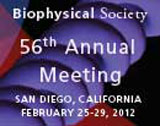Products
Your all-inclusive solution
All Products
Download our catalog
Get our Catalog
Applications
Single-molecule imaging results were presented alongside Dr. Paul Maddox of the Institute for Research in Immunology and Cancer. Nüvü Camēras’ EM N2, an innovative and highly sensitive EMCCD camera, was used to observe specific behaviours of cancerous cells.

A presentation intended to illustrate the various advantages of EMCCD technology with a focus on photon counting capabilities was given at the 2011 CCA’s Cytometry and Microscopy Symposium in Toronto entitled “EMCCD Cameras: New Developments and Applications”.
The EM N2’s various applications, advantages and benefits in the field of biomedical research were presented at the National Optics Institute.

The Canadian Space Commerce Association presented Nüvü Camēras’ technology to the ISU’s Space Studies Program as one of the most promising Canadian technologies for applications in astronomy.
Several workshops were held to promote the applications, advantages and benefits of the EM N2 in biomedical research.
The EM N2’s various applications, advantages and benefits in the field of biomedical research were demonstrated at the McGill University Life Sciences Imaging Facility.

The EM N2’s various applications, advantages and benefits in the field of biomedical research were demonstrated across several health research institutes.
A presentation intended to illustrate the various advantages of Nüvü Camēras’ innovative technology was given at the Canadian Space Agency entitled “The Canadian EMCCD Solution for Low Flux Imaging”.

A presentation intended to illustrate the various advantages of Nüvü Camēras’ higher SNR technology was given at the National Research Council Canada Institute for National Measurement Standards entitled “The Best SNR Solution for Low Flux Imaging”.
Results illustrating the various advantages of Nüvü Camēras’ innovative technology for low light imaging was given at the Canadian Space Commerce Association entitled “The Darkest EMCCD Ever”. Nüvü Camēras also participated in the discussion panel.
